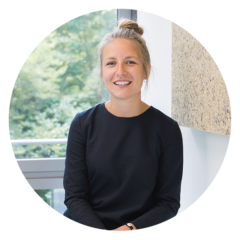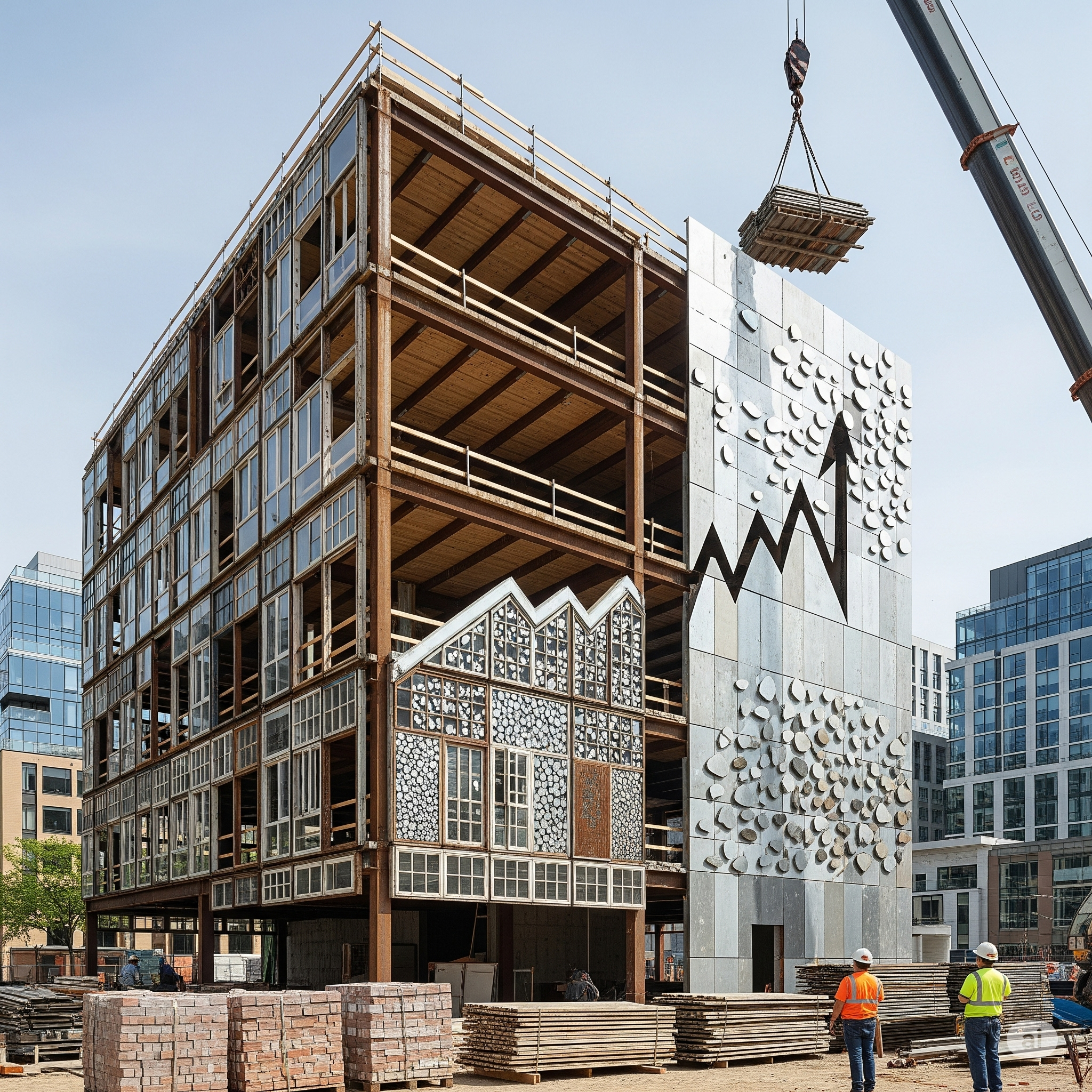In our latestet interview, we spoke with Sophia Sauer, M.Eng., expert in energy and sustainability and authorized representative at ATP sustain. Drawing on her extensive experience with certifications like DGNB, LEED and BREEAM, she provides valuable insights into the economics of circular construction. She explains how this approach is not just an ecological necessity but a viable business model that reduces life-cycle costs and increases property value. Ms. Sauer’s perspective highlights the crucial roles of digital tools and certifications in making sustainable building practices economically successful.
Generally speaking: What do you mean by circular construction?
For us at ATP sustain, circular construction isn’t just about reusing materials or dismantling a building into its separate components. It’s a paradigm shift in planning, operation, thinking, and economics. Buildings are designed as “material banks,” where the materials used are not consumed but borrowed and used—with the prospect of a second or third generation of use. The goal is to close material loops and establish a construction method that reduces the ecological footprint while enabling sustainable economic models for the future.
Why is circular construction not only ecologically but also economically sound?
In the traditional construction industry, resources are used linearly, which leads to waste, loss of value, and long-term costs through disposal or renovation. In contrast, circular construction transforms buildings into durable investment goods with recovery potential. Through the separation of materials by type, modular construction, and digital documentation, secondary raw material markets and new business models emerge. This not only reduces life-cycle costs but also increases the residual value of the property—a clear win-win situation for both the environment and the economy.
Are there already reliable figures or models for cost-effectiveness compared to conventional construction?
Yes, e.g. we work with well-founded methods like Life Cycle Costing (LCC) and Life Cycle Assessment (LCA), which are increasingly validated by real market data. In close collaboration with deconstruction companies and material platforms, we analyze various options over the entire life cycle of a building. For example, we can compare the costs of interior finishing, deconstruction, and disposal with the expenses for maintenance, deconstruction with reuse, or sale. This holistic view enables a reliable economic assessment in comparison to conventional construction.
What role do BIM and/or digital material passports play in the economic evaluation of deconstruction, reuse, or investment decisions?
BIM is the game-changer. With Building Information Modeling, we can create digital twins during the planning phase that capture all material flows, environmental impacts, and potential for future deconstruction. In combination with material passports, the building becomes a “transparent raw material repository.” For investors, this means predictable residual values, lower deconstruction risk, a better ESG rating, and a clear competitive advantage. BIM thus enables a new economic intelligence in the life cycle of real estate. At ATP, we have a suitable BIM standard that is continuously being developed so that we can carry out ecological and circular evaluations with it.
And how do certifications contribute to economic optimization?
Certificates like ÖGNI/DGNB or BREEAM are no longer just a marketing tool. They are increasingly a prerequisite for accessing financing, especially in the green finance sector, and support compliance with the EU Taxonomy. By considering life-cycle costs, recycling quotas, and deconstruction potential in the certification criteria, new benchmarks for economic sustainability are created. Those who plan and build with certification in mind can often benefit from more favorable financing conditions and a better position in the investment market. In addition, the DGNB recently published that those who consider sustainability qualities from the start of a project do not necessarily build more expensively.
What do you mean by the holistic development of sustainable real estate?
For us, holistic means systematically integrating ecological, economic, and social aspects from the very beginning—from urban planning and architecture to operation and deconstruction. Sustainability doesn’t start with the choice of insulation material, but with the question: How do we want to live, work, and reside in the future? A sustainable property is flexible, reversible, inclusive, and generates more energy and quality of life than it consumes. Its profitability results from long-term value retention and adaptability to new uses.
What role will architects and planners play in the future in the evaluation of buildings?
Architects and planners will be significantly responsible for how circular, flexibly usable, and resilient buildings are—and therefore, how economically they function in the long term. This role requires interdisciplinary thinking, digital skills, and a deep understanding of material ecology and systemic relationships.
From your perspective, are there any structural or political frameworks that would more strongly favor circular and economically viable construction?
Absolutely. What is currently missing is consistent pricing for environmental follow-up costs as well as mandatory deconstruction obligations. We also need more local component exchanges so that deconstructed materials can get a second life through short transport routes. Politically, what is needed includes tax incentives for circular materials, an EU-wide obligation for digital building passports, a secondary raw material market with funding mechanisms, and more education for builders and investors. If we want true circularity, we need regulatory guardrails that enforce it—and no longer subsidize a system based on waste.

Sophia Sauer, M.Eng., has been working as energy and sustainability expert and authorized representative at ATP sustain GmbH in Munich since 2018. She earned a Master’s degree in Energy Efficiency Design and a Bachelor’s degree in Energy-Efficient Planning and Construction from HS Augsburg. Her extensive qualifications include certifications as a DGNB Auditor and Consultant, LEED AP, and BREEAM In-Use Auditor.

